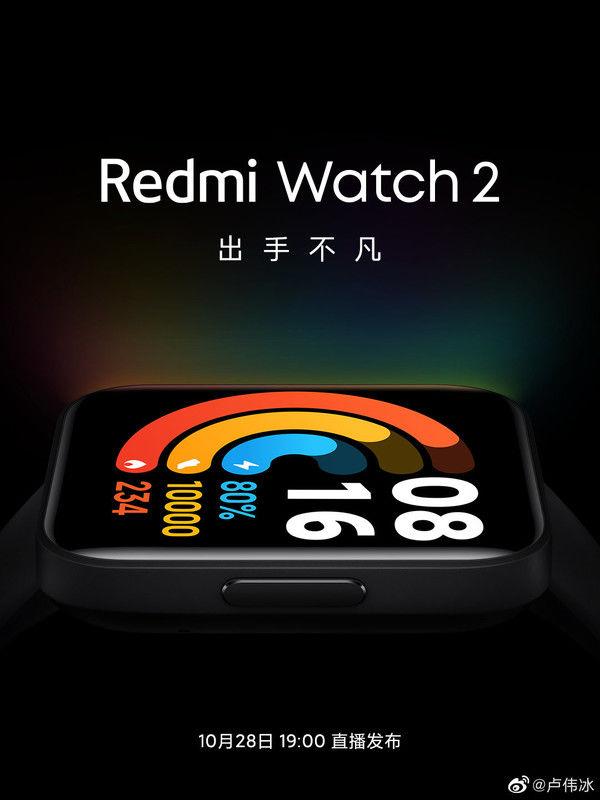иҺ«й—®еӨ©ж¶Ҝи·ҜеҮ йҮҚпјҢиҪ»иЎ«дҫ§еёҪдё”д»Һе®№гҖӮиҝҷзҜҮж–Үз« дё»иҰҒи®Іиҝ°еҠ иҪҪWebApplicationContextзҡ„ж–№ејҸзӣёе…ізҡ„зҹҘиҜҶпјҢеёҢжңӣиғҪдёәдҪ жҸҗдҫӣеё®еҠ©гҖӮ
WebApplicationContextжҳҜApplicationContextзҡ„еӯҗжҺҘеҸЈпјҢзәөи§ӮSpringжЎҶжһ¶зҡ„еҮ з§Қе®№еҷЁпјҢBeanFactoryдҪңдёәйЎ¶зә§зҡ„жҺҘеҸЈпјҢжҳҜжүҖжңүIOCе®№еҷЁзҡ„жңҖдёҠеұӮжҺҘеҸЈпјҢйЎҫеҗҚжҖқд№үWebApplicationContextжҳҜдҫқиө–дәҺWebе®№еҷЁзҡ„дёҖдёӘSpringзҡ„IOCе®№еҷЁгҖӮеүҚжҸҗжқЎд»¶жҳҜwebе®№еҷЁеҗҜеҠЁеҗҺиҝҷдёӘе®№еҷЁжүҚиғҪеҗҜеҠЁгҖӮйӮЈд№ҲеҰӮдҪ•еҖҹеҠ©webе®№еҷЁжқҘеҗҜеҠЁSpring webзҡ„дёҠдёӢж–Үпјҹ
第дёҖз§Қж–№ејҸпјҡжҲ‘们еҸҜд»ҘйҖҡиҝҮorg.springframework.web.context.ContextLoaderServlet;
第дәҢз§ҚејҸпјҡorg.springframework.web.context.ContextLoaderListener.
иҝҷдёӨз§Қж–№ејҸжңүд»Җд№ҲдёҚеҗҢе‘ўпјҹlistenerе®Ңе…ЁжҳҜи§ӮеҜҹиҖ…зҡ„и®ҫи®ЎпјҢд»…д»…жү§иЎҢзҡ„жҳҜзӣ‘еҗ¬зҡ„д»»еҠЎпјҢиҖҢservletзҡ„еҗҜеҠЁиҰҒзЁҚеҫ®е»¶иҝҹдёҖдәӣпјҢеҗҜеҠЁзҡ„еүҚеҗҺйЎәеәҸжҳҜжңүеҪұеғҸзҡ„гҖӮжүҖд»ҘжҲ‘и®ӨдёәlistenerжӣҙеҘҪз”ЁдёҖдәӣпјҢе®һйҷ…ејҖеҸ‘дёӯзҡ„жЎҶжһ¶й…ҚзҪ®дёӯд№ҹжҳҜlistenerжӣҙеӨҡдёҖдәӣпјҢиҝҷдёҖзӮ№еӨ§е®¶еә”иҜҘжңүжүҖдҪ“дјҡгҖӮ
й…ҚзҪ®еҰӮдёӢпјҡ

ж–Үз« еӣҫзүҮ
1 < context-param> 2 < param-name> contextConfigLocation< /param-name> 3 < param-value> /WEB-INF/applicationContext.xml< /param-value> 4 < /context-param> 5 6 < listener> 7 < listener-class> org.springframework.web.context.ContextLoaderListener< /listener-class> 8 < /listener>

ж–Үз« еӣҫзүҮ
дёҠйқўйӮЈдёҖз§ҚжҳҜSpring Webе®№еҷЁж”ҫеңЁclasspathдёӢзҡ„д»»дҪ•и·Ҝеҫ„зҡ„й…ҚзҪ®пјҢеҰӮжһңжҳҜж”ҫеңЁweb.xmlзәҰе®ҡзҡ„й…ҚзҪ®пјҢеҲҷеҸҜд»ҘзңҒз•Ҙcontext-paramзҡ„й…ҚзҪ®
йҖҡиҝҮжҹҘзңӢContextLoaderListenerзҡ„жәҗд»Јз ҒеҸҜд»ҘеҸ‘зҺ°е®ғзҡ„зұ»зҡ„з»“жһ„еҰӮдёӢеӣҫжүҖзӨәпјҡ

ж–Үз« еӣҫзүҮ
йҖҡиҝҮдёҠеӣҫеҸҜд»ҘеҸ‘зҺ°ContextLoaderListener继жүҝдәҶContextLoaderзұ»д»ҘеҸҠе®һзҺ°дәҶServletContextListenerжҺҘеҸЈпјҢServletContextListenerеҸҲе®һзҺ°дәҶEvenListenerжҺҘеҸЈпјҢжүҖд»ҘиҝҷдёӘзӣ‘еҗ¬еҷЁе…·жңүдәӢ件зӣ‘еҗ¬зҡ„еҠҹиғҪпјҢ并且жҳҜзӣ‘еҗ¬дәҶwebе®№еҷЁпјҢwebе®№еҷЁеҗҜеҠЁй©¬дёҠеҠ иҪҪжү§иЎҢгҖӮContextLoaderж„ҹи§үжӣҙеғҸжҳҜжү§иЎҢеҠ иҪҪwebе®№еҷЁзҡ„дёҖдёӘе°Ҹе°Ҹзҡ„core组件пјҢиҙҹиҙЈжү§иЎҢеҠ иҪҪwebе®№еҷЁзҡ„йҖ»иҫ‘гҖӮдёӢйқўйҮҚзӮ№жқҘиҜҙдёҖиҜҙиҝҷдёӘгҖӮ

ж–Үз« еӣҫзүҮ
public void contextInitialized(ServletContextEvent event) {
//йҰ–е…Ҳе…ҲиҺ·еҸ–ContextLoaderеҜ№иұЎ this.contextLoader = createContextLoader(); if (this.contextLoader == null) { this.contextLoader = this; }
//йҖҡиҝҮservletContextеҜ№иұЎеҺ»еҠ иҪҪWebApplicationContext this.contextLoader.initWebApplicationContext(event.getServletContext()); }

ж–Үз« еӣҫзүҮ
initWebApplicationContextзҡ„дё»иҰҒд»Јз Ғпјҡ

ж–Үз« еӣҫзүҮ
public WebApplicationContext initWebApplicationContext(ServletContext servletContext) {
//еҺ»servletе®№еҷЁдёӯеҺ»еҜ»жүҫorg.springframework.web.context.WebApplicationContext.rootдҪңдёәkeyзҡ„valueпјҢд№ҹе°ұжҳҜwebApplicationContextеҜ№иұЎ if (servletContext.getAttribute(WebApplicationContext.ROOT_WEB_APPLICATION_CONTEXT_ATTRIBUTE) != null) { throw new IllegalStateException( "Cannot initialize context because there is already a root application context present - " + "check whether you have multiple ContextLoader* definitions in your web.xml!"); }Log logger = LogFactory.getLog(ContextLoader.class); servletContext.log("Initializing Spring root WebApplicationContext"); if (logger.isInfoEnabled()) { logger.info("Root WebApplicationContext: initialization started"); } long startTime = System.currentTimeMillis(); try { // Store context in local instance variable, to guarantee that // it is available on ServletContext shutdown. if (this.context == null) { this.context = createWebApplicationContext(servletContext); } if (this.context instanceof ConfigurableWebApplicationContext) { configureAndRefreshWebApplicationContext((ConfigurableWebApplicationContext)this.context, servletContext); }//е°ҶApplicationContextж”ҫе…ҘServletContextдёӯпјҢе…¶keyдёә< WebApplicationContext.ROOT_WEB_APPLICATION_CONTEXT_ATTRIBUTEservletContext.setAttribute(WebApplicationContext.ROOT_WEB_APPLICATION_CONTEXT_ATTRIBUTE, this.context);//е°ҶApplicationContextж”ҫе…ҘContextLoaderзҡ„е…ЁеұҖйқҷжҖҒеёёйҮҸMapдёӯпјҢе…¶дёӯkeyдёәпјҡThread.currentThread().getContextClassLoader()еҚіеҪ“еүҚзәҝзЁӢзұ»еҠ иҪҪеҷЁClassLoader ccl = Thread.currentThread().getContextClassLoader(); if (ccl == ContextLoader.class.getClassLoader()) { currentContext = this.context; } else if (ccl != null) { currentContextPerThread.put(ccl, this.context); }if (logger.isDebugEnabled()) { logger.debug("Published root WebApplicationContext as ServletContext attribute with name [" + WebApplicationContext.ROOT_WEB_APPLICATION_CONTEXT_ATTRIBUTE + "]"); } if (logger.isInfoEnabled()) { long elapsedTime = System.currentTimeMillis() - startTime; logger.info("Root WebApplicationContext: initialization completed in " + elapsedTime + " ms"); }return this.context; } catch (RuntimeException ex) { logger.error("Context initialization failed", ex); servletContext.setAttribute(WebApplicationContext.ROOT_WEB_APPLICATION_CONTEXT_ATTRIBUTE, ex); throw ex; } catch (Error err) { logger.error("Context initialization failed", err); servletContext.setAttribute(WebApplicationContext.ROOT_WEB_APPLICATION_CONTEXT_ATTRIBUTE, err); throw err; } }

ж–Үз« еӣҫзүҮ
д»ҺдёҠйқўзҡ„д»Јз ҒеӨ§е®¶еә”иҜҘжҳҺзҷҪдәҶSpringеҲқе§ӢеҢ–д№ӢеҗҺпјҢе°ҶApplicationContextеӯҳеҲ°еңЁдәҶдёӨдёӘең°ж–№(servletContextдёӯе’ҢcurrentContextPerThreadдёӯ)пјҢйӮЈд№ҲжҳҜдёҚжҳҜж„Ҹе‘ізқҖжҲ‘们еҸҜд»ҘйҖҡиҝҮдёӨз§Қж–№ејҸеҸ–еҫ—ApplicationContextпјҹ
第дёҖз§ҚиҺ·еҸ–ж–№ејҸпјҡ
1 request.getSession().getServletContext().getAttribute("org.springframework.web.context.WebApplicationContext.ROOT")
иҝҷж ·зЎ®е®һеҸҜд»ҘиҺ·еҸ–пјҢдҪҶжҳҜеҰӮжһңйңҖиҰҒжҲ‘们иҮӘе·ұеҺ»иҝҷж ·иҺ·еҸ–зҡ„иҜқпјҢжңӘе…ҚSpringд№ҹеӨӘlowдәҶеҗ§пјҹйӮЈж ·дјҡиҫңиҙҹSpringдҪңдёәwebејҖеҸ‘第дёҖж ёеҝғжЎҶжһ¶зҡ„ең°дҪҚзҡ„гҖӮиҜқдёҚеӨҡиҜҙпјҢе…¶е®һSpringе·Із»Ҹз»ҷжҲ‘们жҸҗдҫӣжҺҘеҸЈдәҶпјҡ
гҖҗеҠ иҪҪWebApplicationContextзҡ„ж–№ејҸгҖ‘еңЁWebApplicationContextUtilsзұ»дёӯжңүдёҖдёӘйқҷжҖҒж–№жі•пјҡ

ж–Үз« еӣҫзүҮ
1 public static WebApplicationContext getRequiredWebApplicationContext(ServletContext sc) 2throws IllegalStateException { 3 4WebApplicationContext wac = getWebApplicationContext(sc); 5if (wac == null) { 6throw new IllegalStateException("No WebApplicationContext found: no ContextLoaderListener registered?"); 7} 8return wac; 9}

ж–Үз« еӣҫзүҮ
1 public static WebApplicationContext getWebApplicationContext(ServletContext sc) { 2return getWebApplicationContext(sc, WebApplicationContext.ROOT_WEB_APPLICATION_CONTEXT_ATTRIBUTE); 3}
йҖҡиҝҮжү§иЎҢдёҠйқўзҡ„ж–№жі•еҸҜд»ҘиҺ·еҸ–WebApplicationContextеҜ№иұЎгҖӮ
第дәҢз§Қж–№жі•пјҡ
еҖҹз”ЁApplicationContextAware,ApplicationContextзҡ„её®еҠ©зұ»иғҪеӨҹиҮӘеҠЁиЈ…иҪҪApplicationContextпјҢеҸӘиҰҒдҪ е°ҶжҹҗдёӘзұ»е®һзҺ°иҝҷдёӘжҺҘеҸЈпјҢ并е°ҶиҝҷдёӘе®һзҺ°зұ»еңЁSpringй…ҚзҪ®ж–Ү件дёӯиҝӣиЎҢй…ҚзҪ®пјҢSpringдјҡиҮӘеҠЁеё®дҪ иҝӣиЎҢжіЁе…Ҙ ApplicationContext.ApplicationContextAwareзҡ„д»Јз Ғз»“жһ„еҰӮдёӢпјҡ
1 public interface ApplicationContextAware { 2 3void setApplicationContext(ApplicationContext applicationContext) throws BeansException; 4 5 }
е°ұиҝҷдёҖдёӘжҺҘеҸЈгҖӮеҸҜд»Ҙиҝҷж ·з®ҖеҚ•зҡ„е®һзҺ°дёҖдёӘApplicationContextHelperзұ»пјҡ

ж–Үз« еӣҫзүҮ
1 public class ApplicationHelper implements ApplicationContextAware { 2 3 4private ApplicationContext applicationContext; 5 6public void setApplicationContext(ApplicationContext applicationContext) 7throws BeansException { 8this.applicationContext = applicationContext; 9} 10 11 12publicApplicationContext getApplicationContext(){ 13return this.applicationContext; 14} 15 }

ж–Үз« еӣҫзүҮ
йҖҡиҝҮApplicationHelperжҲ‘们е°ұеҸҜд»ҘиҺ·еҫ—е’ұ们жғіиҰҒзҡ„AppilcationContextзұ»дәҶгҖӮ
иҝҷжҳҜжҲ‘еҜ№еҰӮдҪ•иҺ·еҸ–Spring WebдёҠдёӢж–Үзҡ„дёҖдёӘзҗҶи§ЈгҖӮ
жҺЁиҚҗйҳ…иҜ»
- flaskapp
- з”ЁIMX6ејҖеҸ‘жқҝеҲӣе»әAndroidжЁЎжӢҹеҷЁ
- йЎөйқўеёғеұҖ-GridпјҢStackPanelпјҢDockPanelпјҢWrapPanel
- mapper.xml зҡ„й…ҚзҪ®
- Jmeter-APPи„ҡжң¬еҪ•еҲ¶
- йқўиҜ•еҝ…й—®д№ӢеҺҹеһӢй“ҫдёҺ继жүҝд»ҘеҸҠcall/bind/apply
- The method sort(Comparable[]) in the type Shell is not applicable for the arguments (int[])
- зҗҶи§Ј Android Build зі»з»ҹ
- зҗҶи§ЈAndroidзј–иҜ‘е‘Ҫд»Ө











